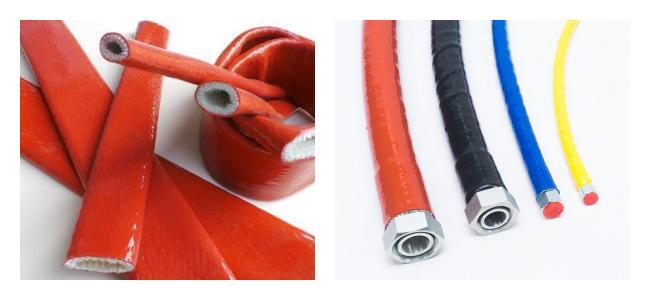This article was last revised in 368 Days ago, some of its contents may have changed. If you have any questions, you can ask the author。
The history of silicone fire sleeves can be traced back to the need for enhanced fire protection in various industries, particularly those involving high-temperature environments such as automotive, aerospace, marine, and industrial sectors. Here's an overview of the development history:
Emergence of Fire Protection Needs: As industries evolved and technologies advanced, there arose a need for effective fire protection solutions for critical components such as hoses, wires, cables, and tubing operating in high-temperature environments. Traditional materials were often inadequate in providing sufficient protection against fire hazards.
Introduction of Silicone Rubber: Silicone rubber emerged as a versatile material due to its excellent thermal resistance, flexibility, and flame retardant properties. It became widely used in various industrial applications, including as coatings, seals, and insulation.
Development of Silicone Fire Sleeves: With the recognition of silicone rubber's advantageous properties, manufacturers began developing silicone-based fire sleeves specifically designed to withstand high temperatures and provide superior fire protection. These sleeves were engineered to encase and shield vulnerable components from flames, heat, sparks, and molten metal splash.
Advancements in Manufacturing Processes: Over time, advancements in manufacturing processes, such as extrusion and vulcanization, enabled the production of silicone fire sleeves in various sizes, shapes, and configurations to suit different application requirements. These improvements also led to enhanced product quality, durability, and performance.
Expanded Applications: Silicone fire sleeves found widespread adoption across diverse industries where fire safety is paramount. They are commonly used to protect hydraulic hoses, fuel lines, wiring harnesses, and other critical systems in automotive engines, aircraft engines, industrial machinery, and marine vessels.
Innovation and Compliance: Ongoing innovation in materials science and engineering continues to drive improvements in silicone fire sleeve technology. Manufacturers are constantly refining formulations and designs to meet or exceed industry standards and regulatory requirements for fire resistance, thermal insulation, and environmental sustainability.
Future Trends: As industries evolve and safety standards evolve, silicone fire sleeves are likely to continue evolving to meet emerging challenges and demands. This may involve the integration of advanced materials, such as hybrid polymers or ceramic additives, and the development of smart or self-extinguishing features to enhance overall fire protection capabilities.
In summary, the history of silicone fire sleeves reflects a continuous quest for better fire protection solutions driven by technological advancements, industry requirements, and a commitment to safety and reliability in high-temperature environments.